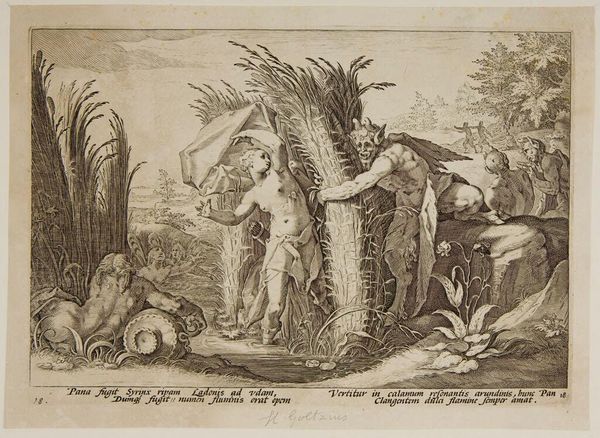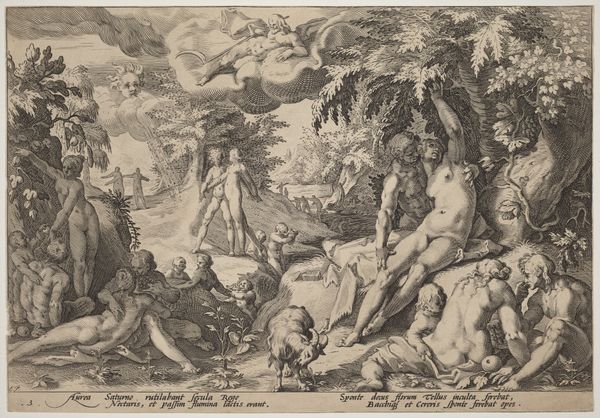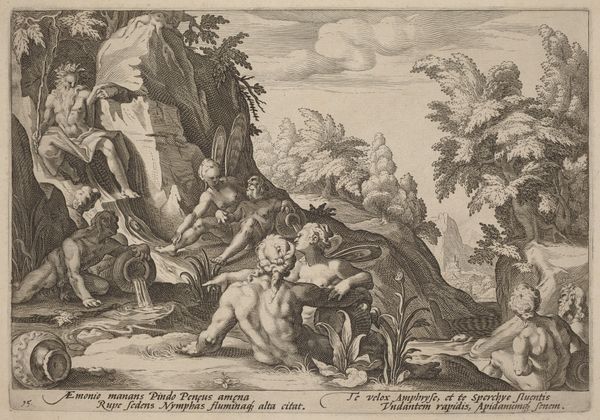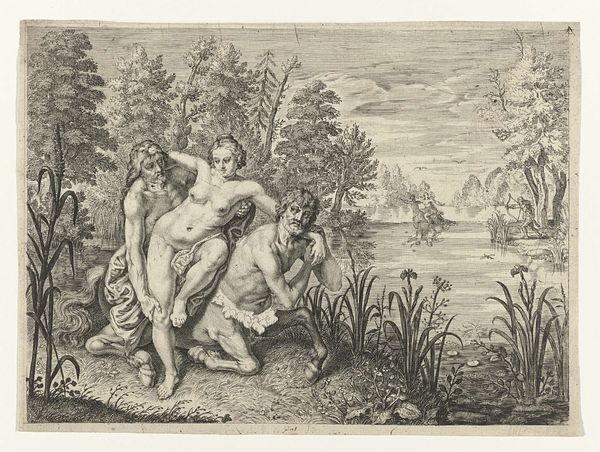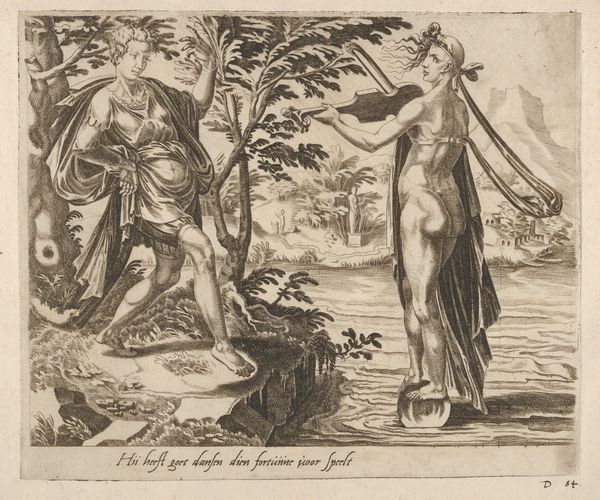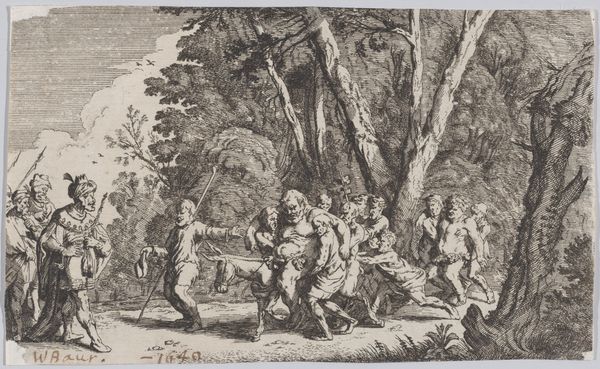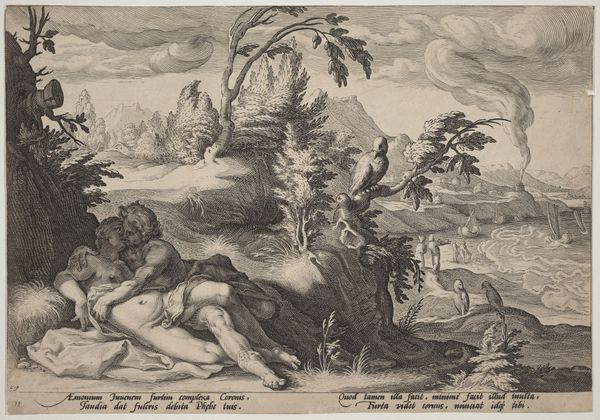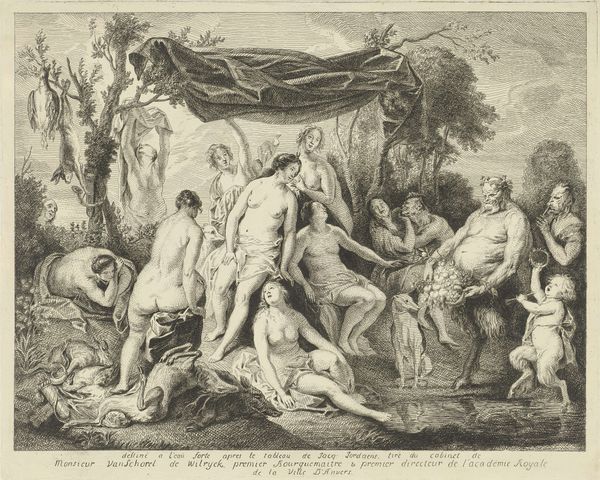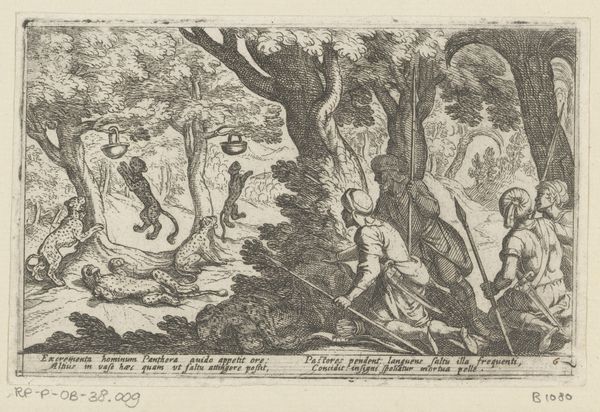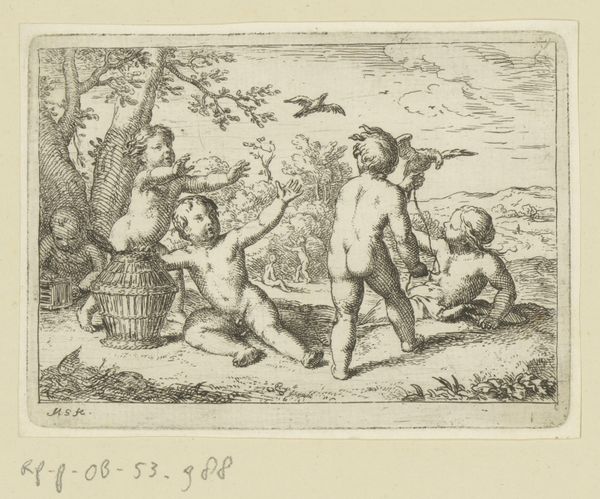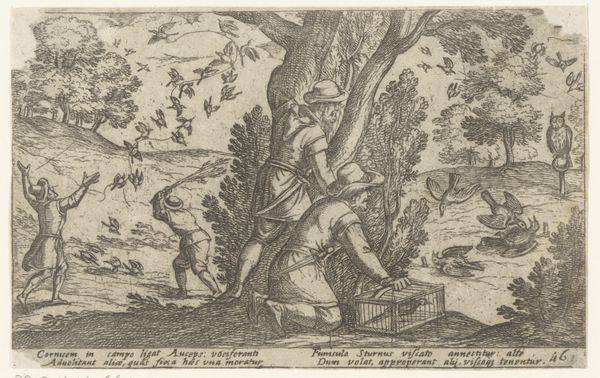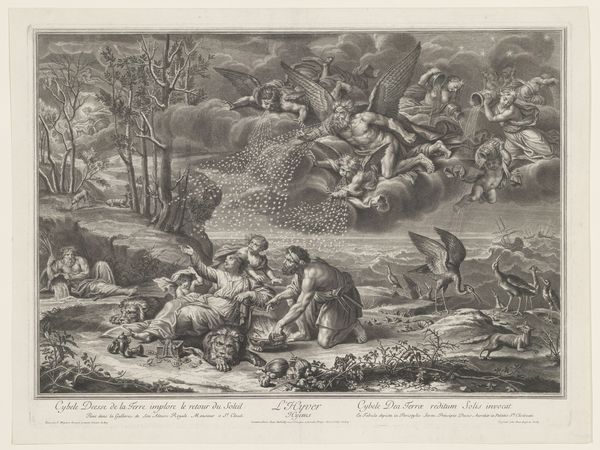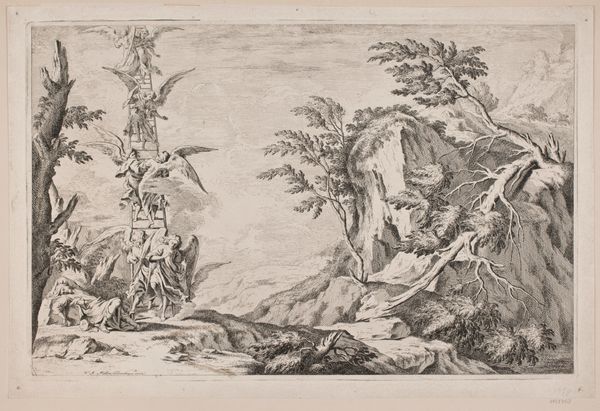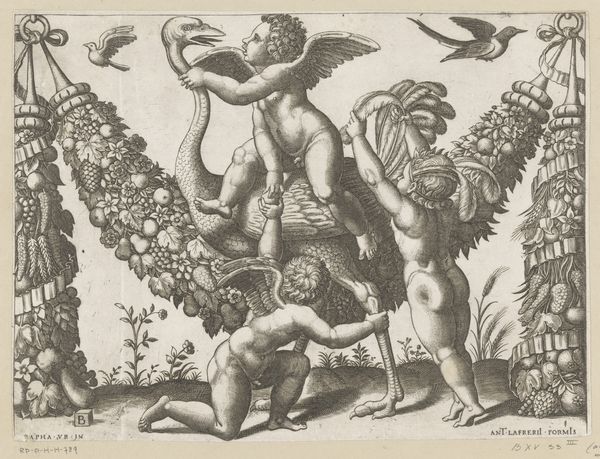
print, engraving
# print
#
landscape
#
mannerism
#
figuration
#
mythology
#
history-painting
#
engraving
Dimensions: sheet: 17.6 x 25.4 cm (6 15/16 x 10 in.),c ut to platemark
Copyright: National Gallery of Art: CC0 1.0
Curator: Before us, we have Hendrick Goltzius's 1589 engraving, "Pan and Syrinx." Goltzius, of course, was a pivotal figure in Dutch Mannerism. This print showcases his remarkable skill with the burin, creating an incredibly dynamic and detailed scene. Editor: My initial reaction is a sense of claustrophobia. Syrinx, the nymph, is trapped, practically pinned by Pan and the dense reeds. The whole image feels overgrown and the violence of it is uncomfortable. Curator: Absolutely. The print depicts a story from Ovid's Metamorphoses. Pan, god of the wild, lusts after the nymph Syrinx, who flees his advances and prays to the river nymphs for help. They transform her into reeds just as Pan reaches her. Editor: It’s a potent depiction of transformation, though disturbingly centered on male pursuit and female escape. Looking at the role of power, it's a manifestation of how women's bodies were represented—often denied agency—in art. She becomes an object, the reeds, no longer herself, just something from which Pan can now carve his pipes. The inscription makes me feel awful: something along the lines of "Pan loves to blow her melodious laments." Curator: The technical skill on display is truly astounding for the period, though. Look at the range of tones he achieves, from the darkest shadows to the bright highlights, solely through the density and direction of the engraved lines. He pushes the limits of the medium, don't you think? And how that level of craft elevates his cultural standing? He is taking mythological and humanist subjects from texts, a true scholar artist. Editor: While recognizing Goltzius' artistry and status in Northern European humanism, it’s crucial not to ignore the complex web of misogyny inherent in the scene. It is important to continue highlighting narratives in which women are preyed upon or rendered into passive objects. The scene also depicts a sexual violence that it attempts to aestheticize, even to justify in its construction and classicist approach. And although Goltzius himself may not overtly express it, in this work his complicity and social alignment do show up. Curator: I take your point; art historical discourse necessitates acknowledging uncomfortable themes. But it's precisely in looking closely at works like this, interrogating the contexts of their creation and reception, that we understand how the visual arts, and institutions displaying them, have shaped culture, right? Editor: Yes, exactly! And the dialogue with it, the ways the themes are reproduced, revised, refused is also a testament. The past informs, it doesn't define us.
Comments
No comments
Be the first to comment and join the conversation on the ultimate creative platform.
